Birgit Pfitzmann
INDUS: Effective and Efficient Language Models for Scientific Applications
May 17, 2024
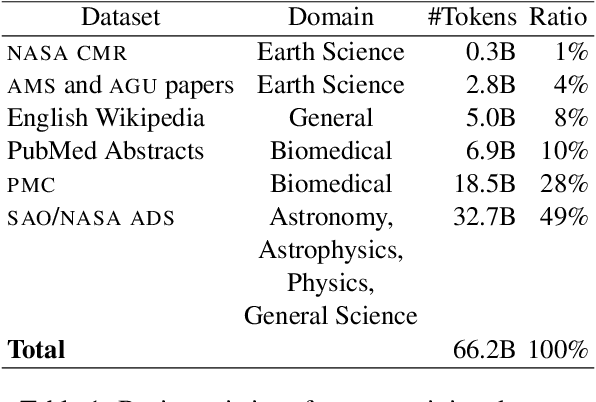


Abstract:Large language models (LLMs) trained on general domain corpora showed remarkable results on natural language processing (NLP) tasks. However, previous research demonstrated LLMs trained using domain-focused corpora perform better on specialized tasks. Inspired by this pivotal insight, we developed INDUS, a comprehensive suite of LLMs tailored for the Earth science, biology, physics, heliophysics, planetary sciences and astrophysics domains and trained using curated scientific corpora drawn from diverse data sources. The suite of models include: (1) an encoder model trained using domain-specific vocabulary and corpora to address natural language understanding tasks, (2) a contrastive-learning-based general text embedding model trained using a diverse set of datasets drawn from multiple sources to address information retrieval tasks and (3) smaller versions of these models created using knowledge distillation techniques to address applications which have latency or resource constraints. We also created three new scientific benchmark datasets namely, CLIMATE-CHANGE-NER (entity-recognition), NASA-QA (extractive QA) and NASA-IR (IR) to accelerate research in these multi-disciplinary fields. Finally, we show that our models outperform both general-purpose encoders (RoBERTa) and existing domain-specific encoders (SciBERT) on these new tasks as well as existing benchmark tasks in the domains of interest.
DocLayNet: A Large Human-Annotated Dataset for Document-Layout Analysis
Jun 02, 2022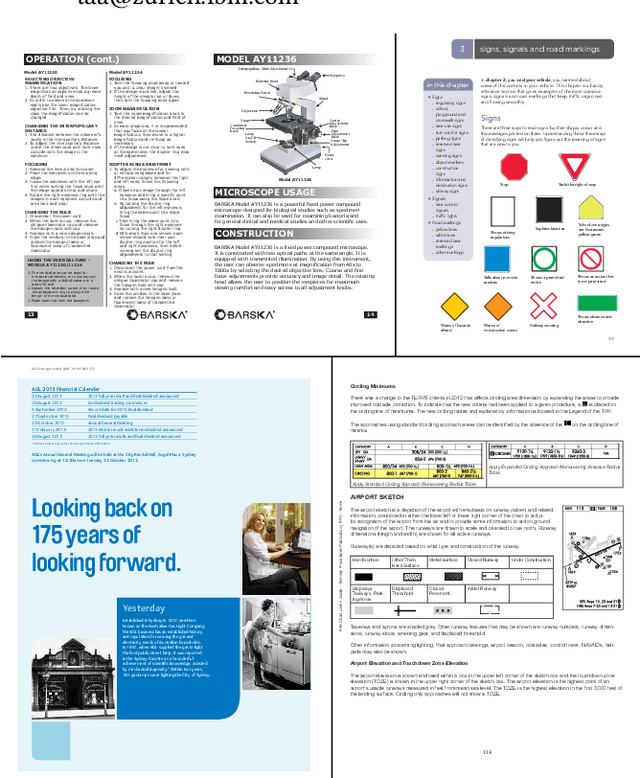
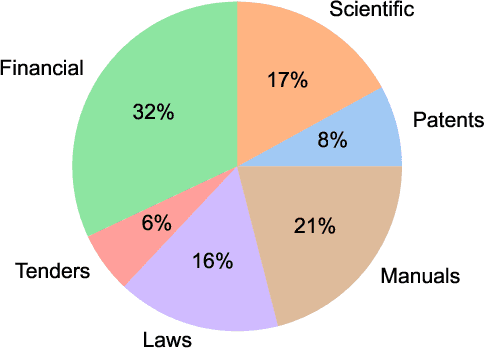
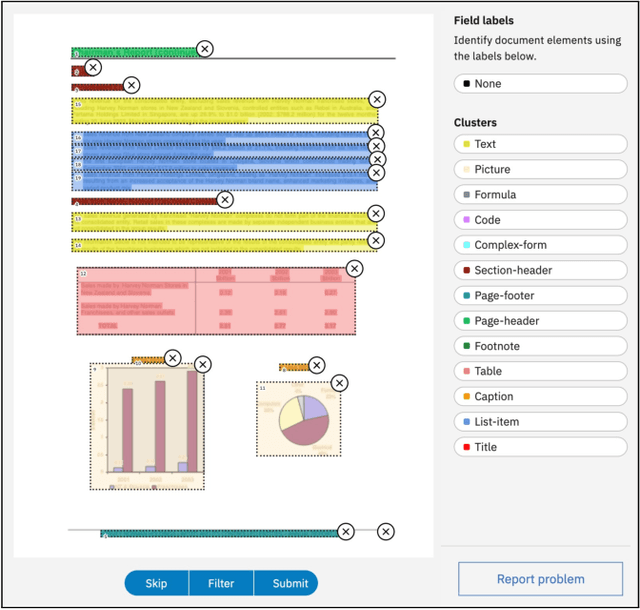
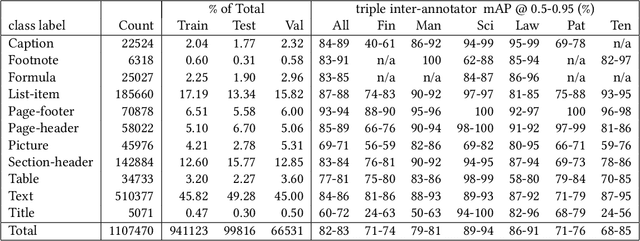
Abstract:Accurate document layout analysis is a key requirement for high-quality PDF document conversion. With the recent availability of public, large ground-truth datasets such as PubLayNet and DocBank, deep-learning models have proven to be very effective at layout detection and segmentation. While these datasets are of adequate size to train such models, they severely lack in layout variability since they are sourced from scientific article repositories such as PubMed and arXiv only. Consequently, the accuracy of the layout segmentation drops significantly when these models are applied on more challenging and diverse layouts. In this paper, we present \textit{DocLayNet}, a new, publicly available, document-layout annotation dataset in COCO format. It contains 80863 manually annotated pages from diverse data sources to represent a wide variability in layouts. For each PDF page, the layout annotations provide labelled bounding-boxes with a choice of 11 distinct classes. DocLayNet also provides a subset of double- and triple-annotated pages to determine the inter-annotator agreement. In multiple experiments, we provide baseline accuracy scores (in mAP) for a set of popular object detection models. We also demonstrate that these models fall approximately 10\% behind the inter-annotator agreement. Furthermore, we provide evidence that DocLayNet is of sufficient size. Lastly, we compare models trained on PubLayNet, DocBank and DocLayNet, showing that layout predictions of the DocLayNet-trained models are more robust and thus the preferred choice for general-purpose document-layout analysis.
 Add to Chrome
Add to Chrome Add to Firefox
Add to Firefox Add to Edge
Add to Edge